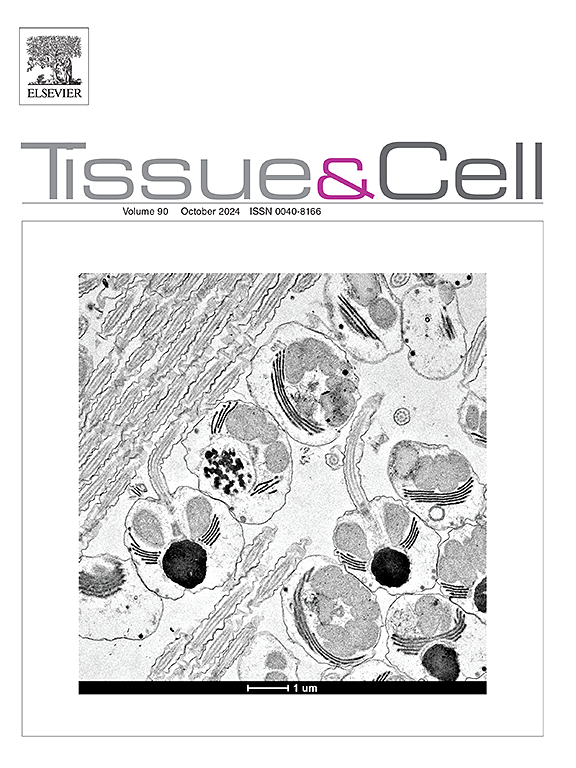Autonomic nervous system imbalance in diabetic mouse choroids
IF 2.7
4区 生物学
Q1 ANATOMY & MORPHOLOGY
引用次数: 0
Abstract
Purpose
We investigated neurohomeostasis and its possible underlying mechanisms in the choroids of diabetic mice.
Methods
Streptozotocin-induced diabetic mice were used in this study. Choroidal nerve fiber alterations were observed via transmission electron microscopy (TEM). The levels of epinephrine and acetylcholine in the choroid were determined via ultra-high-performance liquid chromatography–tandem mass spectrometry. Tyrosine hydroxylase (TH), choline acetyl transferase (ChAT), and neuronal nitric oxide synthase (nNOS), vasoactive intestinal peptide (VIP), neuropeptide Y (NPY), and calcitonin gene-related peptide (CGRP) levels were evaluated by western blot or quantitative real-time polymerase chain reaction. In addition, immunofluorescence staining were used to analyze the changes in key enzymes (TH, dopamine beta-hydroxylase (DβH), and CGRP) in the superior cervical sympathetic ganglia (SCG) and trigeminal ganglia (TG).
Results
TEM revealed a loose myelin sheath around nerve fibers, axon atrophy, and cytoplasmic vacuoles in Schwann cells in diabetic choroids. Lower epinephrine levels were observed in diabetic mice. Although no difference was found in acetylcholine level, the epinephrine-to-acetylcholine ratio was greatly decreased. Decreased TH and increased ChAT, nNOS, VIP, NPY, and CGRP were found in diabetic choroids. Fewer TH-positive and DβH-positive neuronal cells were found in the SCGs of diabetic mice. More CGRP-positive and fewer TH-positive neuronal cells were observed in the TG of diabetic mice.
Conclusions
Altered markers of the sympathetic, parasympathetic and sensory systems were present in diabetic mouse choroids. An imbalanced choroidal nervous system might explain the initiation of choroidal neovascularization in diabetic patients.
求助全文
约1分钟内获得全文
求助全文
来源期刊

Tissue & cell
医学-解剖学与形态学
CiteScore
3.90
自引率
0.00%
发文量
234
期刊介绍:
Tissue and Cell is devoted to original research on the organization of cells, subcellular and extracellular components at all levels, including the grouping and interrelations of cells in tissues and organs. The journal encourages submission of ultrastructural studies that provide novel insights into structure, function and physiology of cells and tissues, in health and disease. Bioengineering and stem cells studies focused on the description of morphological and/or histological data are also welcomed.
Studies investigating the effect of compounds and/or substances on structure of cells and tissues are generally outside the scope of this journal. For consideration, studies should contain a clear rationale on the use of (a) given substance(s), have a compelling morphological and structural focus and present novel incremental findings from previous literature.
 求助内容:
求助内容: 应助结果提醒方式:
应助结果提醒方式:


